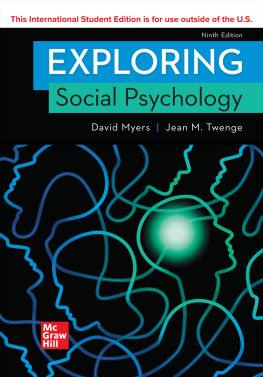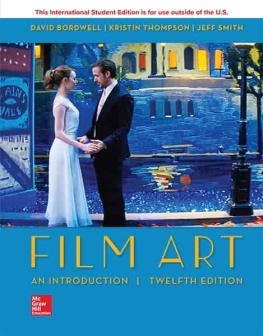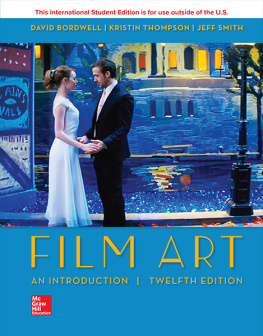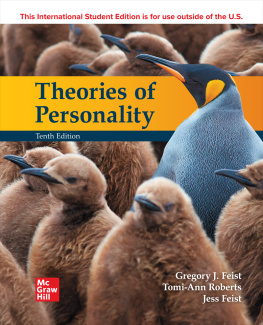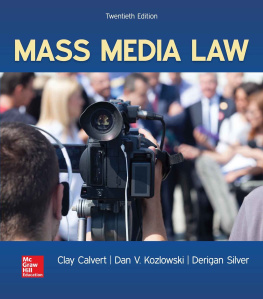i
The Moral of the Story
AN INTRODUCTION TO ETHICS
Eighth Edition
NINA ROSENSTAND
San Diego Mesa College

ii

THE MORAL OF THE STORY: AN INTRODUCTION TO ETHICS, EIGHTH EDITION
Published by McGraw-Hill Education, 2 Penn Plaza, New York, NY 10121. Copyright 2018 by McGraw-Hill Education. All rights reserved. Printed in the United States of America. Previous editions 2013, 2009, and 2006. No part of this publication may be reproduced or distributed in any form or by any means, or stored in a database or retrieval system, without the prior written consent of McGraw-Hill Education, including, but not limited to, in any network or other electronic storage or transmission, or broadcast for distance learning.
Some ancillaries, including electronic and print components, may not be available to customers outside the United States.
This book is printed on acid-free paper.
1 2 3 4 5 6 7 8 9 LCR 21 20 19 18 17
ISBN 978-1-259-90796-8
MHID 1-259-90796-1
Senior Vice President, Products & Markets: Kurt L. Strand
Vice President, General Manager, Products & Markets: Michael Ryan
Vice President, Content Design & Delivery: Kimberly Meriwether David
Managing Director: David Patterson
Brand Manager/Product Developer: Jamie Laferrera
Marketing Manager: Meredith Leo
Director, Content Design & Delivery: Terri Schiesl
Program Manager: Jennifer Shekleton
Content Project Managers: Melissa M. Leick, Jodi Banowetz, Sandy Schnee
Buyer: Susan K. Culbertson
Design: Jessica Serd
Content Licensing Specialists: Shannon Manderscheid
Cover Image: Karen Barbour
Cover Design: Studio Montage, Inc.
Compositor: MPS Limited
Printer: LSC Communications
All credits appearing on page or at the end of the book are considered to be an extension of the copyright page.
Library of Congress Cataloging-in-Publication Data
Rosenstand, Nina, author.
The moral of the story : an introduction to ethics / Nina Rosenstand, San Diego Mesa College.
Eighth Edition. | Dubuque : McGraw-Hill Education, 2016.
LCCN 2016048988 | ISBN 9781259907968 (alk. paper)
LCSH: EthicsTextbooks.
LCC BJ1012 .R59 2016 | DDC 170dc23
LC record available at https://lccn.loc.gov/2016048988
The Internet addresses listed in the text were accurate at the time of publication. The inclusion of a website does not indicate an endorsement by the authors or McGraw-Hill Education, and McGraw-Hill Education does not guarantee the accuracy of the information presented at these sites.
mheducation.com/highered
iii
For Craig and my parents
Immorality may be fun, but it isnt fun enough to take the place of 100 percent virtue and three square meals a day.
Design for Living
iv
Contents
v
vi
vii
viii

ix
Preface
L ike the previous editions of The Moral of the Story, the eighth edition is a combination of classical questions in ethical theory and contemporary issues. The general concept remains the same: that discussions about moral issues can be facilitated using stories as examples, as a form of ethics lab where solutions can be tried out under controlled conditions. The book is written primarily for such college courses as Introduction to Ethics; Moral Philosophy; and Introduction to Philosophy: Values. Many textbooks in value theory or ethics choose to focus on problems of social importance, such as abortion, euthanasia, and capital punishment. This book reflects my own teaching experience that it is better for students to be introduced to basic ethical theory before they are plunged into discussions involving moral judgments. Consequently, The Moral of the Story provides an overview of influential classical and contemporary approaches to ethical theory. However, without practical application of the theories, there can be no complete understanding of the problems raised, so each chapter includes examples that illustrate and explore the issues. As in previous editions, each chapter concludes with a section of examplessummaries and excerptstaken from the world of fiction, novels and films in particular.
Within the last few decades, narrative theory has carved out a niche in American and European philosophy as well as in other academic disciplines. It is no longer unusual for ethicists and other thinkers to include works of fiction in their courses as well as in their professional papers, not only as examples of problem solving, but also as illustrations of an epistemological phenomenon: Humans are, in Alasdair MacIntyres words, storytelling animals, and we humans seem to choose the narrative form as our favorite way to structure meaning as we attempt to make sense of our reality. The narrative trend is making itself felt in other fields as well: The medical profession is looking to stories that teach about doctor-patient relationships; psychotherapists recommend that patients watch films to achieve an understanding of their own situation, and have patients write stories with themselves as the lead character. The court system is making use of films and novels to reach young people in trouble with the law. The U.S. military is partnering up with authors to anticipate possible scenarios for future assaults on American interests. NASA is teaming up with science fiction writers and Hollywood in an attempt to once again make space exploration exciting for new generations of readers, and judging from the success of recent films, that approach is working. And neuroscientists tell us that we understand the world by superimposing narrative order on the chaos we experience. It seems that new fields are constantly being added to the list of professions that are discovering, or rediscovering, the potential of stories.
x
Organization
Like the previous editions, the eighth edition of The Moral of the Story is divided into three major sections. Part 1 introduces the topic of ethics and places the phenomenon of storytelling within the context of moral education and discussion. Part 2 examines the conduct theories of ethical relativism, psychological and ethical egoism, altruism, utilitarianism, and Kantian deontology, and explores the concepts of personhood, rights, and justice. Part 3 focuses on the subject of virtue theory and contains chapters on Socrates and Plato, Aristotle, contemporary virtue theories in America, theories of authenticity in the Continental tradition, and gender theory. The virtues of courage, compassion, and gratitude are examined in detail, and the book concludes with a more detailed discussion of a broad selection of moral issues, applying theories introduced in previous chapters. Each chapter concludes with a set of study questions, a section of Primary Readings with excerpts from classical and contemporary texts, and a section of Narratives, a collection of stories that illustrate the moral issues raised in the chapter. The Primary Readings are selected for their value as discussion topics; they dont necessarily reflect my own views, and I have made no attempt to select readings that cover all possible angles, because of space limitations. The Narratives will be described in more detail below.




